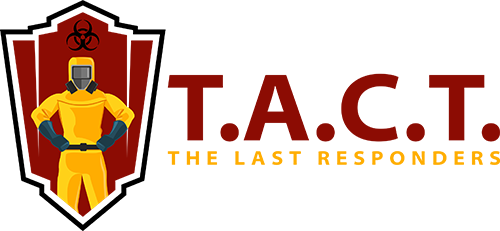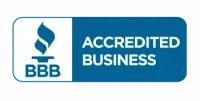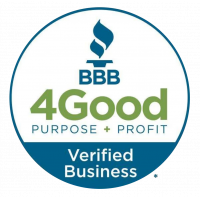Rodent Droppings Clean Up Service in Phoenix, AZ, Greater Phoenix Area, and the Entire State of Arizona
Rodent infestations are more than just a nuisance—they present real health hazards that can compromise the safety of your home or business. Long after rats, mice, or other pests are removed, their droppings, urine, and nesting materials can contaminate the environment with dangerous bacteria and airborne pathogens. These biohazards can trigger illness, allergic reactions, and even long-term respiratory conditions if not handled properly.
As epitomized by the recent deaths of actor Gene Hackman and his wife, Betsy Arakawa, rodent-borne diseases remain a serious threat. Arakawa reportedly died from hantavirus pulmonary syndrome (HPS), a rare but potentially fatal illness transmitted through contact with infected rodents or their droppings.
T.A.C.T. 48 offers professional rodent droppings clean up services across Phoenix and throughout Arizona. We help homeowners, landlords, and property managers restore their spaces to safe, livable conditions with compassion, care, and full compliance with environmental health standards.
Get Help Now
If you’ve discovered rodent droppings or suspect an infestation, it’s important to take immediate action. Exposure to dried urine or feces can lead to serious health risks. The resources below can help you get local assistance, file complaints, or speak directly with environmental health specialists in Arizona:
- Maricopa County Environmental Services – Vector Control Program For rodent complaints, inspection requests, or guidance on safe cleanup practices in the Phoenix metro area. 602-506-6616 (Available Monday–Friday)
- Arizona Department of Health Services – Environmental Health Division Offers information on rodent-borne illnesses and prevention steps. 602-364-3118 | Text ADHSINFO to 833-233-3896
- Arizona Poison and Drug Information Center Call for free medical advice if you’ve been exposed to droppings, odors, or unknown substances. 1-800-222-1222 (24/7)
- University of Arizona Cooperative Extension – Pest Management Resources Educational support for homeowners, schools, and farms dealing with rodents and other pests. 520-626-5161
Additional Resources
- CDC Rodent Cleanup Guidelines
- EPA Household Hazardous Waste Management
- Arizona Department of Health Services – Pest Prevention
- National Pest Management Association

Why Immediate Rodent Droppings Cleanup is Crucial
Health Hazards from Rodent Waste
Rodent droppings and urine contain a range of dangerous pathogens. The Centers for Disease Control and Prevention (CDC) warns that direct contact, or even inhalation of dust particles from dried droppings, can cause:
- Hantavirus Pulmonary Syndrome (HPS) – a potentially fatal respiratory condition
- Salmonella – causes severe gastrointestinal illness
- Leptospirosis – spreads through water or surfaces contaminated with rodent urine
- Lymphocytic choriomeningitis virus (LCMV) – a viral infection especially dangerous for pregnant women
Even long after an infestation ends, these pathogens can remain active in contaminated materials, making thorough cleanup essential.
Legal and Regulatory Standards
Rodent waste is classified as a biohazard by both EPA and OSHA, requiring cleanup to follow strict procedures:
- OSHA Bloodborne Pathogens Standard (29 CFR 1910.1030) OSHA Standard
- EPA cleanup and decontamination requirements
- CDC guidance on cleaning buildings infested by rodents CDC Rodent Cleanup
Airborne Contamination and Odors
Dried rodent waste often turns to dust that can be stirred into the air during routine cleaning or movement. This poses significant respiratory risks to anyone nearby. Additionally, the strong ammonia-like smell of rodent urine can linger in insulation, ductwork, and porous surfaces, making spaces feel uninhabitable.
Property Damage and Structural Concerns
Rodents often burrow into insulation, walls, attics, and basements—leaving behind waste that damages building materials and attracts future infestations. Without professional remediation, contamination can spread through ventilation systems and result in costly long-term repairs.
What Our Rodent Droppings Cleanup Services Include
Biohazard Waste Removal
- Safe removal of rodent droppings, urine, nesting materials, and contaminated insulation
- Containment and sealing of affected zones to prevent spread of airborne dust
- Use of industrial HEPA-filtered vacuums and protective equipment
Disinfection and Decontamination
- Application of EPA-approved disinfectants designed to neutralize Hantavirus, LCMV, and other rodent-borne bacteria
- Cleaning and sanitizing of all affected surfaces, including wood, drywall, attic beams, vents, and insulation
- Mold and mildew remediation, if present
Odor Elimination and Air Treatment
- Complete odor removal using ozone generators, hydroxyl machines, and HEPA air scrubbers
- Deodorization of HVAC systems, crawlspaces, garages, and attics
- Restoration of air quality to safe, breathable levels


The Professional Cleanup Process
1. No-Cost Initial Assessment and Planning
Our team begins with a discreet, on-site evaluation of the contaminated area. We identify the severity of infestation, determine the scope of damage, and develop a detailed cleanup plan. We’ll also provide an upfront cost estimate and help you understand any insurance coverage available.
2. Containment and Safety Protocols
Before cleanup begins, we isolate affected areas to avoid cross-contamination. Our technicians use full personal protective equipment (PPE) and follow OSHA-compliant procedures to ensure their safety and yours. Airflow is carefully managed using negative air machines to prevent pathogens from entering clean parts of the building.
3. Decontamination and Sanitization
All biological waste is safely removed, and contaminated surfaces are treated with hospital-grade disinfectants. Porous materials that cannot be salvaged—such as insulation or drywall—are bagged, labeled, and disposed of according to EPA and local regulations. Hard surfaces are deep-cleaned and disinfected thoroughly.
4. Restoration and Remediation
Where possible, we clean and restore affected areas. If necessary, we recommend contractors or pest control specialists for long-term prevention and repairs. We’ll also help identify vulnerable zones in attics, basements, or garages to reduce the risk of future infestations.
5. Final Inspection and Clearance
Once cleanup is complete, we perform a thorough final inspection to confirm all biohazards have been removed. We provide documentation for insurance or property records and can issue a certificate of completion upon request. Our goal is to leave the space safe, clean, and ready to use again.
Why Choose T.A.C.T. 48 for Rodent Droppings Cleanup?
T.A.C.T. 48 understands the urgency, discomfort, and risk that comes with rodent infestations. That’s why we’re committed to fast, discreet, and thorough service throughout the state of Arizona. Our technicians are trained in biohazard removal and use equipment not available to the public. Whether you’re a homeowner, business owner, or property manager, you can count on us to restore safety and peace of mind—quickly and respectfully.
We arrive in unmarked vehicles, maintain your privacy, and follow all federal, state, and local cleanup standards. Our local roots in the Phoenix metro area allow us to respond fast, and our statewide coverage ensures that no matter where you are in Arizona, help is just a phone call away.
Insurance and Cost Considerations
Many homeowner insurance policies will cover rodent-related damage and cleanup, especially if there's biohazard risk or structural involvement. We can help:
- Work directly with your insurance adjuster
- Submit reports, photos, and required documentation
- Offer flexible payment options if insurance is not available
Our goal is to minimize your out-of-pocket costs while ensuring the job is done right.
Frequently Asked Questions (FAQ)
Why are rodent droppings considered a biohazard?
Rodent droppings can carry diseases like Hantavirus, LCMV, and Salmonella. Dried waste particles can become airborne and are easily inhaled, which makes them a serious health risk if not professionally removed.
Can I clean up the droppings myself with gloves and bleach?
It's not recommended. Disturbing dried droppings without containment can spread dust-borne pathogens. Professionals use HEPA vacuums, protective suits, and disinfectants designed specifically for these hazards.
How do I know if the contamination is serious?
If you see signs of widespread droppings, smell strong odors, or discover nesting materials in walls or insulation, it's best to schedule a professional inspection. Contamination may extend deeper than what’s visible.
Will the smell go away after cleanup?
Yes. Our odor control process targets smells at the source using ozone and air scrubbing equipment. We also sanitize air ducts, insulation, and other hidden areas.
Is this service covered by insurance?
In many cases, yes. We can assist in reviewing your policy and work directly with your provider to file a claim.
How long does the cleanup take?
Most rodent droppings cleanups are completed within one to two days, depending on the extent of the infestation and the areas affected.
Serving the Entire State of Arizona
T.A.C.T. 48 provides rodent dropping cleanup services throughout:
- Phoenix, Scottsdale, Mesa, Tempe, Chandler, Glendale, Gilbert
- Tucson, Flagstaff, Prescott, Yuma, and all surrounding counties
- Residential homes, commercial buildings, attics, garages, sheds, crawlspaces, and rural properties
Restoring Health, Comfort, and Peace of Mind
Rodent infestations are stressful—and cleaning up after them can feel impossible to do safely on your own. T.A.C.T. 48 is here to help with professional rodent droppings cleanup that protects your health, your property, and your peace of mind.
Contact us 24/7 for emergency response or a no-cost consultation.





